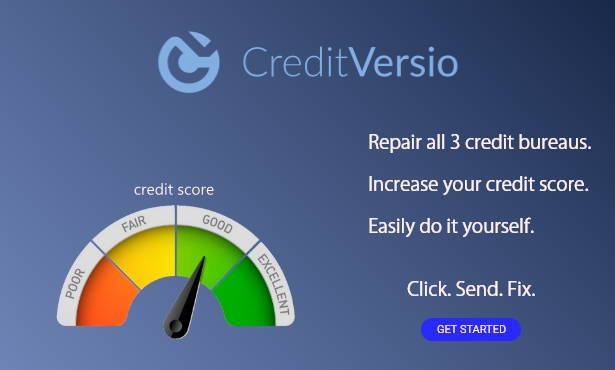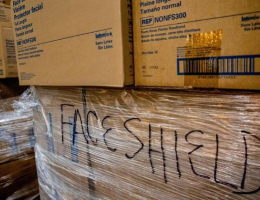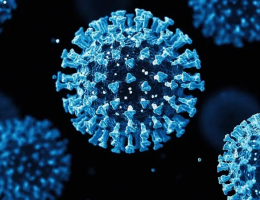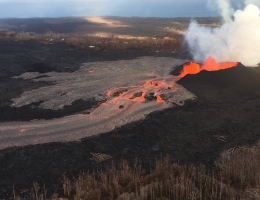EXPLAINER: When and where? How vaccines will roll out in US
By CANDICE CHOI
NEW YORK (AP) — With coronavirus vaccines on the horizon, when and where will most Americans get their shots?
Many of the details are still being worked out, as regulators review the first vaccine candidates. A federal panel of vaccine experts is meeting this week to consider Pfizer’s vaccine, and again next week for Moderna’s.
If the advisory group gives a thumbs-up, the Food and Drug Administration could green light the shots soon after, setting into motion the country’s largest ever vaccination effort.
It will take many months to reach everyone, and expect bumps in the road.
But don’t get discouraged, said Dr. Marcus Plescia, chief medical officer for the Association of State and Territorial Health Officials.
“We will work through those,” he said.
WHEN CAN I GET VACCINATED?
It depends on your risk of getting infected or getting seriously ill. Are you a health care worker? A resident of a nursing home or getting long-term care? Those folks should be first in line for the initial, limited supply, the Centers for Disease Control and Prevention decided.
The first shots could be given within days if the FDA gives the go-ahead for emergency use. States will ultimately decide where to send the shots.
Based on Pfizer’s and Moderna’s stockpiles, federal officials estimate 20 million people in the first priority group could be vaccinated by the end of the year. Both vaccines require two doses.
WHO’S NEXT IN LINE?
An expert panel that advises the CDC on vaccines will meet again to recommend the next group. Possibilities include anyone 65 and older, teachers, police, firefighters and workers in other essential fields, such as food production.
More vaccines are in the pipeline, and officials have said they want to have shots widely available to everyone else before the middle of next year. Vaccine testing is just getting underway in children to determine if they can be given shots
To find out when it is your turn, watch for notices from your state.
WHERE WILL I GET A SHOT?
Pharmacies, health clinics and your doctor’s office are the likely options. States are working on signing them up. Local health departments will also probably run mass vaccination clinics.
Once doses are widely available, people will be able to use an existing government website, vaccinefinder.org, to find COVID-19 shots. The website is already used to find vaccines for the flu and other diseases.
COVID-19 shots are likely to be limited for awhile, and which type people get will probably depend on what’s available.
HOW MUCH WILL IT COST?
It should be free. The government is paying for the vaccine itself. And you shouldn’t be charged a copay or other fee to get it.
The cost for giving the shot will be covered by private and government insurance, based on a set reimbursement fee. If you don’t have insurance, providers can tap a government fund to cover costs.
WHEN WILL I GET MY SECOND SHOT?
It depends on the brand of vaccine. Pfizer’s is three weeks later, and Moderna’s is four weeks.
You’ll get a vaccination record card as a reminder to return for a second shot. You might also get reminder texts, calls or letters in the mail, depending on the location. Shots will be recorded in state and local vaccine registries that already keep track of other vaccinations. COVID-19 vaccines can’t be mixed and matched, so if a second dose is needed, providers will be checking to make sure you get the right one.
Not all vaccines in development require two shots. Johnson & Johnson is testing a single-dose vaccine.
WHAT ABOUT SIDE EFFECTS?
The experimental vaccines have been tested in tens of thousands of volunteers so far, and serious side effects have not been reported. Health officials will be monitoring for side effects as more people get vaccinated, as well as for any potential longer-term issues.
Dr. Anthony Fauci, the nation’s top infectious disease expert, has noted that people might feel achy or feverish right after the shot, or some soreness in the arm. Other temporary side effects reported by study participants included fatigue, headache and chills.
WHAT IF I HAD COVID-19?
Having COVID-19 gives you protection against another infection, but it is not known yet how long that immunity will last. And there’s nothing to indicate that previously infected people shouldn’t get vaccinated, according to the CDC advisory panel.
By vaccinating those with prior infections, “The expectation is for them to be more protected,” said Moncef Slaoui, who’s heading U.S. vaccine development. But studies will be needed to support that, he said.
People with a prior COVID-19 diagnosis weren’t allowed to volunteer for the vaccine tests. But there was no screening to rule out people who might have been previously infected and not known it. So some people with symptom-free infections might have been included. The CDC panel said there was no need to test for those silent infections before getting a vaccine.
For health care workers who had COVID-19, the panel suggests that they might want to let their fellow health workers go ahead of of them since the chance of reinfection is low for the next three months.
___
The Associated Press Health and Science Department receives support from the Howard Hughes Medical Institute’s Department of Science Education. The AP is solely responsible for all content.
Republished by Persona from AP News









.jpg)
